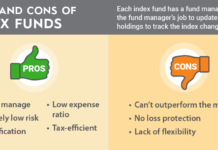You’ve got the job, you’re managing to make the rent each month (if you’ve escaped the nest) and you’re starting to look to the future. Perhaps you are finding, for the first time, that you have some spare money each month after the bills have been paid and are putting aside a regular amount for a rainy day.
Despite the stereotype of Millennials being more concerned with their smartphones than their futures, or of thirtysomethings spending more money on Flat Whites and beard-trimming accessories than on savings, Millennials are actually a lot more cautious than one might expect.
In fact, Millennials are proving to be even more thrifty than their parents. A recent Bank of America report painted a picture of Millennials (defined as aged 23-37) that might surprise many. 63% are saving regularly; 67% have a savings goal that they stick to every month; an impressive 16% of Millennials have over $100,000 in savings.
When asked, for a recent Merrill Edge report, what money they will rely on in twenty years, 66% answered that they will be able to rely on their savings account. The affluent Millennial plans to go it alone, which is perhaps unsurprising given that they’ve come of age during a recession and have started their working lives saddled with massive student debts.
Millennials don’t appear to trust third parties with their money and are more fiscally conservative than their parents, but is it wise for Millennials to turn their backs completely on traditional or non-traditional investments, especially in an age of low interest rates?
Here are five things Millennials should consider when deciding what to do with that excess money:
Start small
You are naturally risk averse and have read too many stories about investments being wiped out overnight by dodgy dealing over which you have no control. Why not consider investigating micro-finance apps? These products take your spare change and invest it on your behalf. When you buy your skinny latte, the product rounds up the cost and invests your change. So, if you spend $3.75 in a store on your debit card, it will put the $1.25 “change” into your investment portfolio. Acorns is the market leader in the US. Stash and Robinhood offer similar small investment options, taking a lot of the brain-work out of playing the markets.
Use employer and government schemes
Most western countries offer tax incentives for pension schemes. In the United States, IRAs and 401k’s offer valuable tax incentives for investors. The UK has ISA’s, among others. Employment pension schemes are an easy and often affordable way of investing money every month. These pensions can be deducted from your gross salary before tax, so the amount invested is significantly more than would be the case if you simply put some of your take-home pay into your savings account. These schemes vary widely from country to country and you will need to do some homework, but in many countries, state saving/pension schemes are guaranteed and carry very little risk.
Start young
The money you invest in your twenties will bring a greater return than the money you invest in later life. Why? Because compound interest generates a profit on these funds, which can then be reinvested and bring more growth. So money that is invested in an IRA, for example, when you’re 25, has the potential to gain interest every year until you retire, multiplying the original investment many times over. By contrast, money that is moved into a savings account will accrue very little and is more likely to depreciate as inflation decreases its real-world value.
Be active
It’s tempting to put a regular amount aside every month and think that that’s all there is to it. While it’s great to have access to funds in the event of an emergency, savings alone won’t cover your retirement. To really succeed at investing, you will have to do some research.
Technology is changing how we invest, and there are many more opportunities for high, medium and low-risk investing than ever before. Cryptocurrencies can reap huge rewards but are very risky. A new generation of trading bots can maximize your investments based on algorithms, if you are willing to hand over money to an automated service.
The more traditional investments favored by Generation X and the Baby Boomers are still rewarding and less risky. Investing in stocks and shares can be daunting but there is an increasing number of online and app-based services that will do the legwork for you. New peer-to-peer services are appearing all the time, where you can lend money for interest or invest in small businesses. Once you experience the taste of success, you will start to enjoy moving your money about and seeing your investments flourish.












